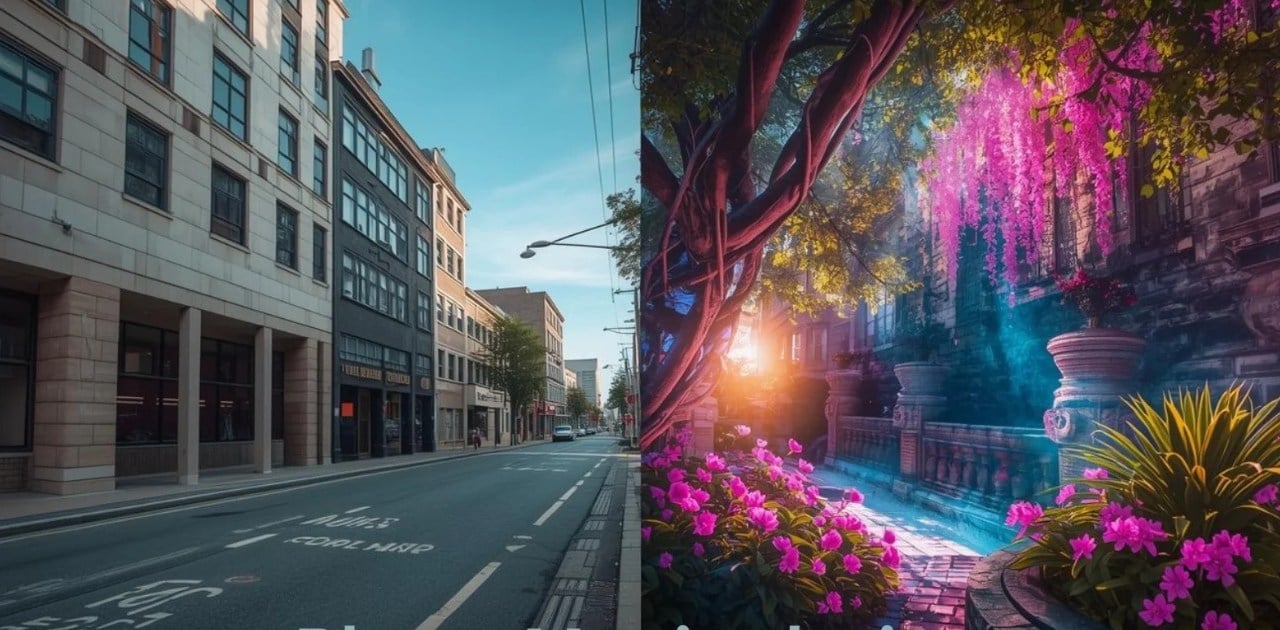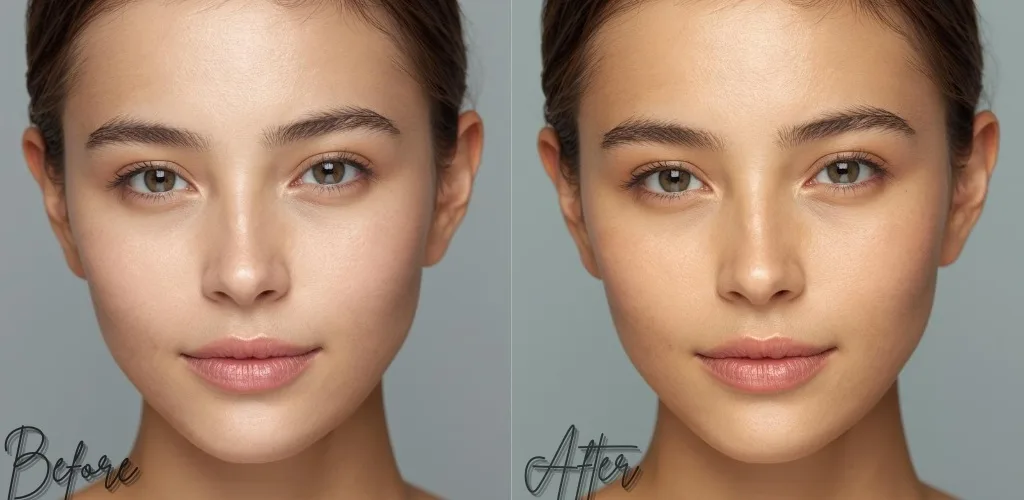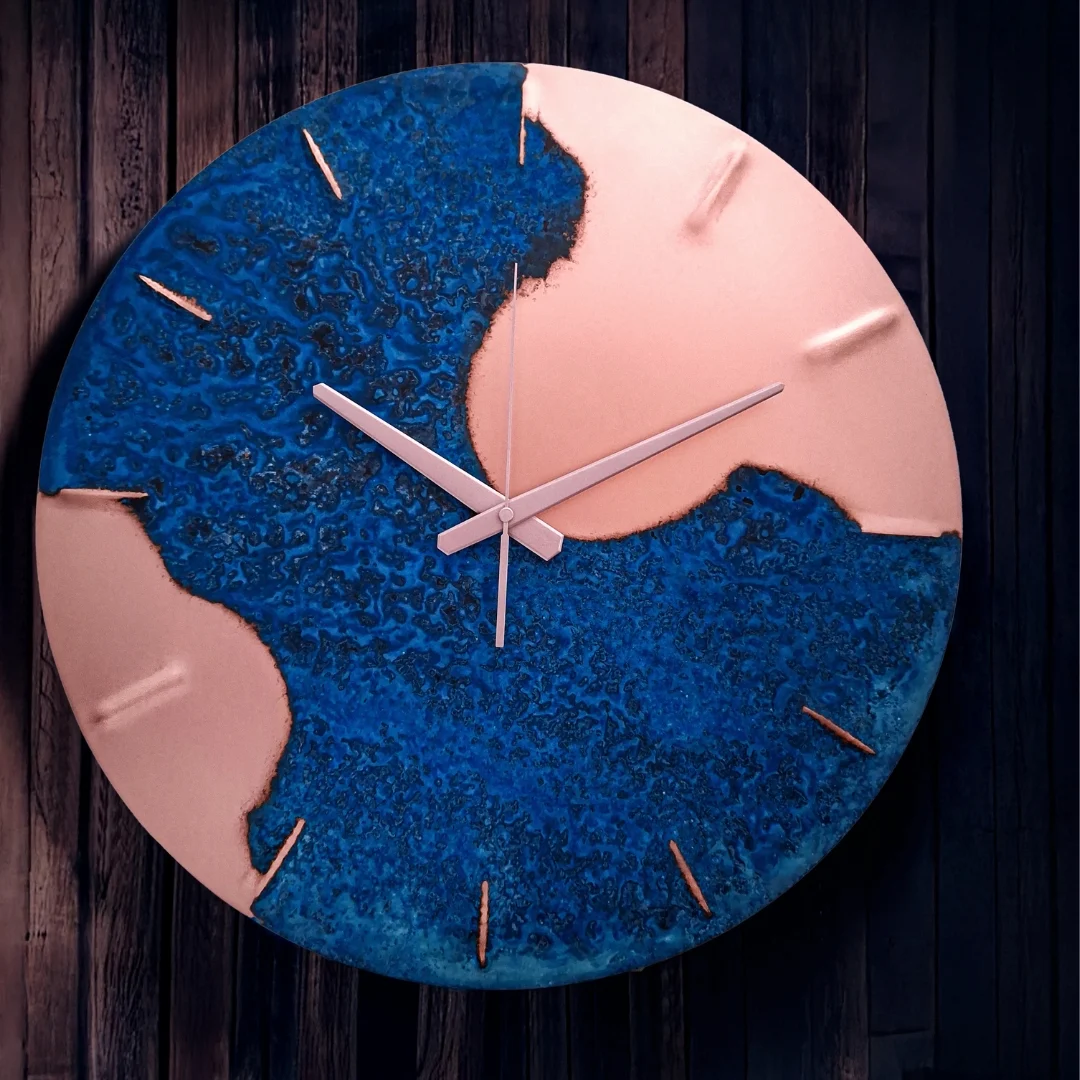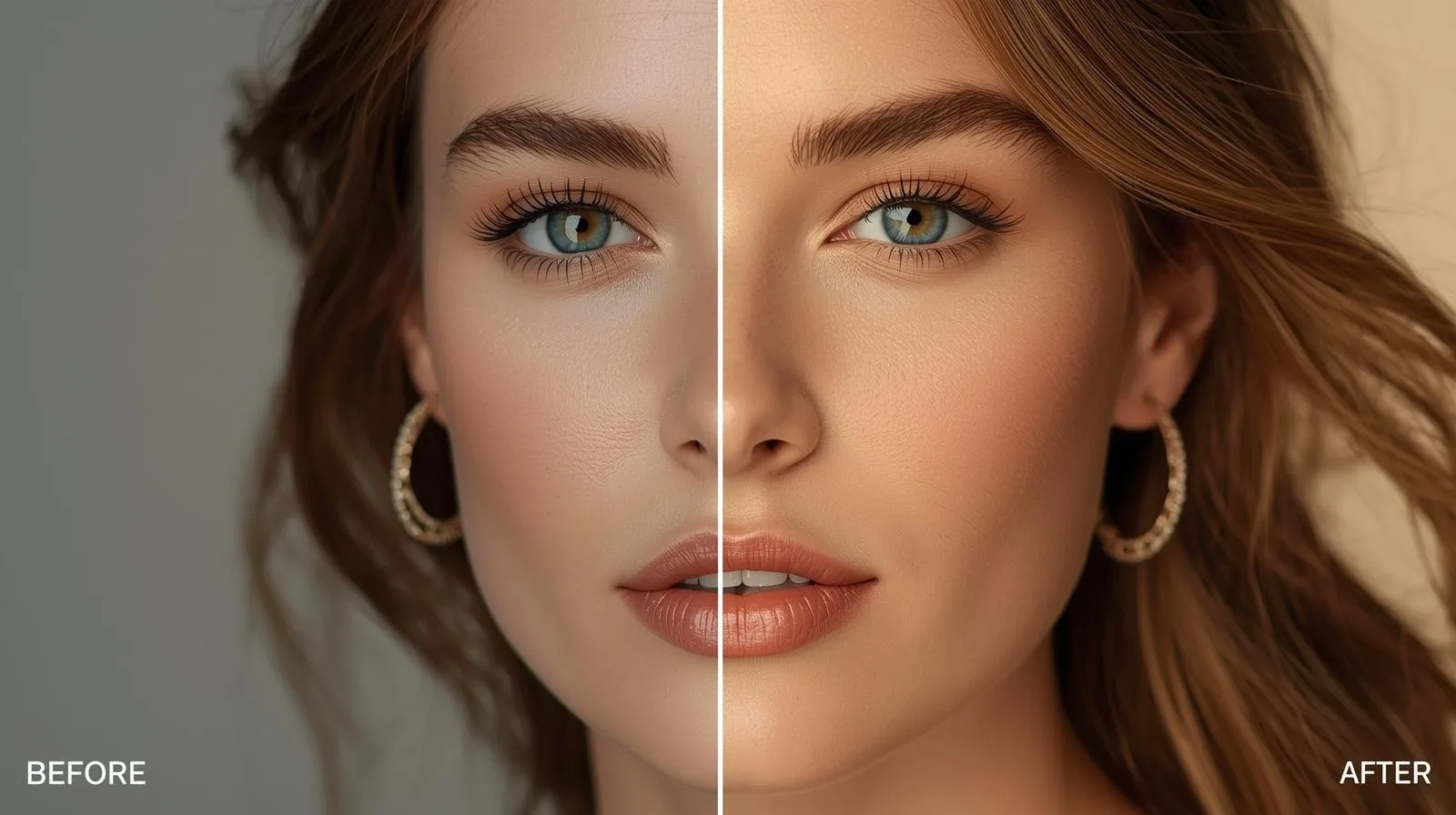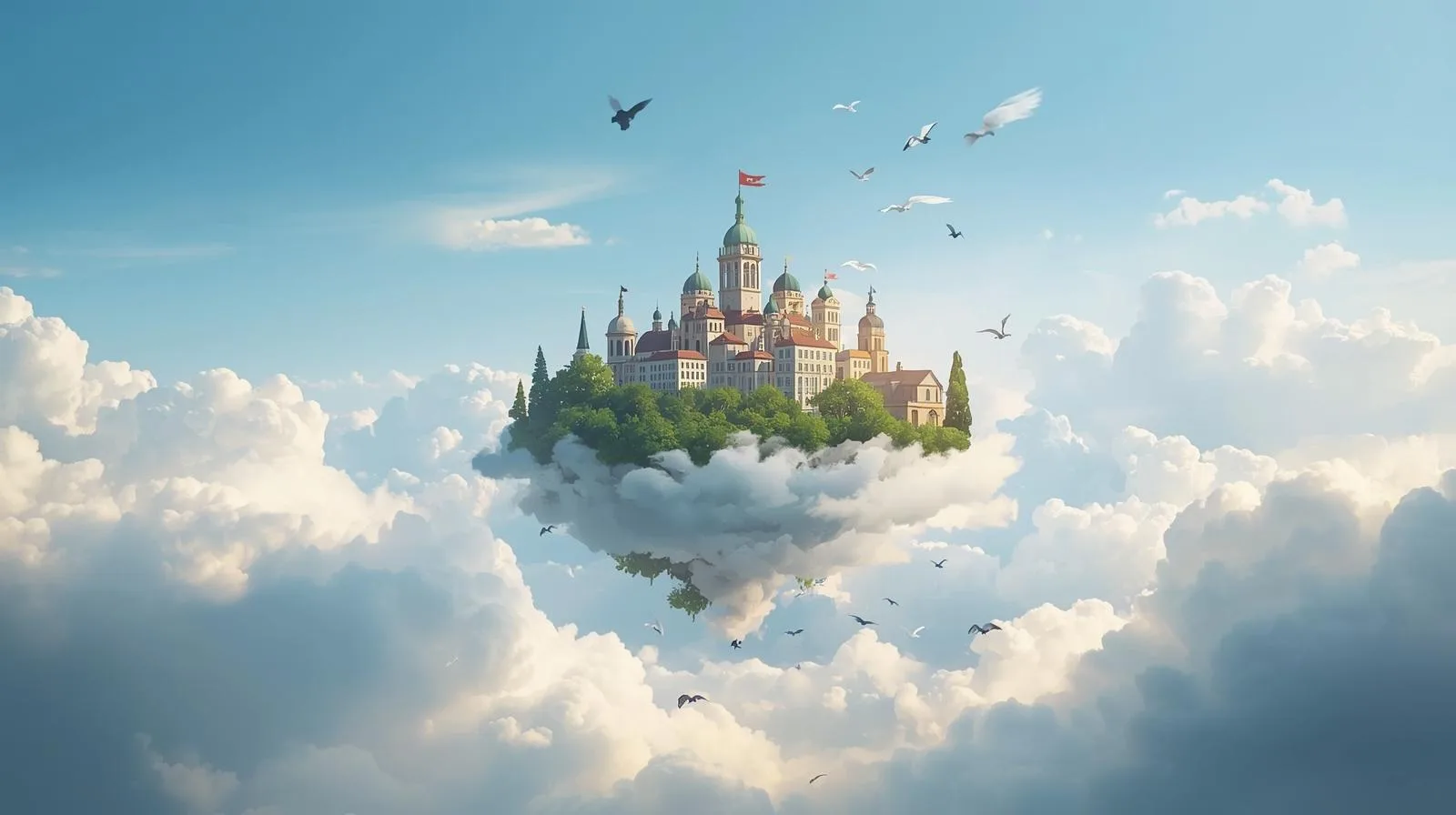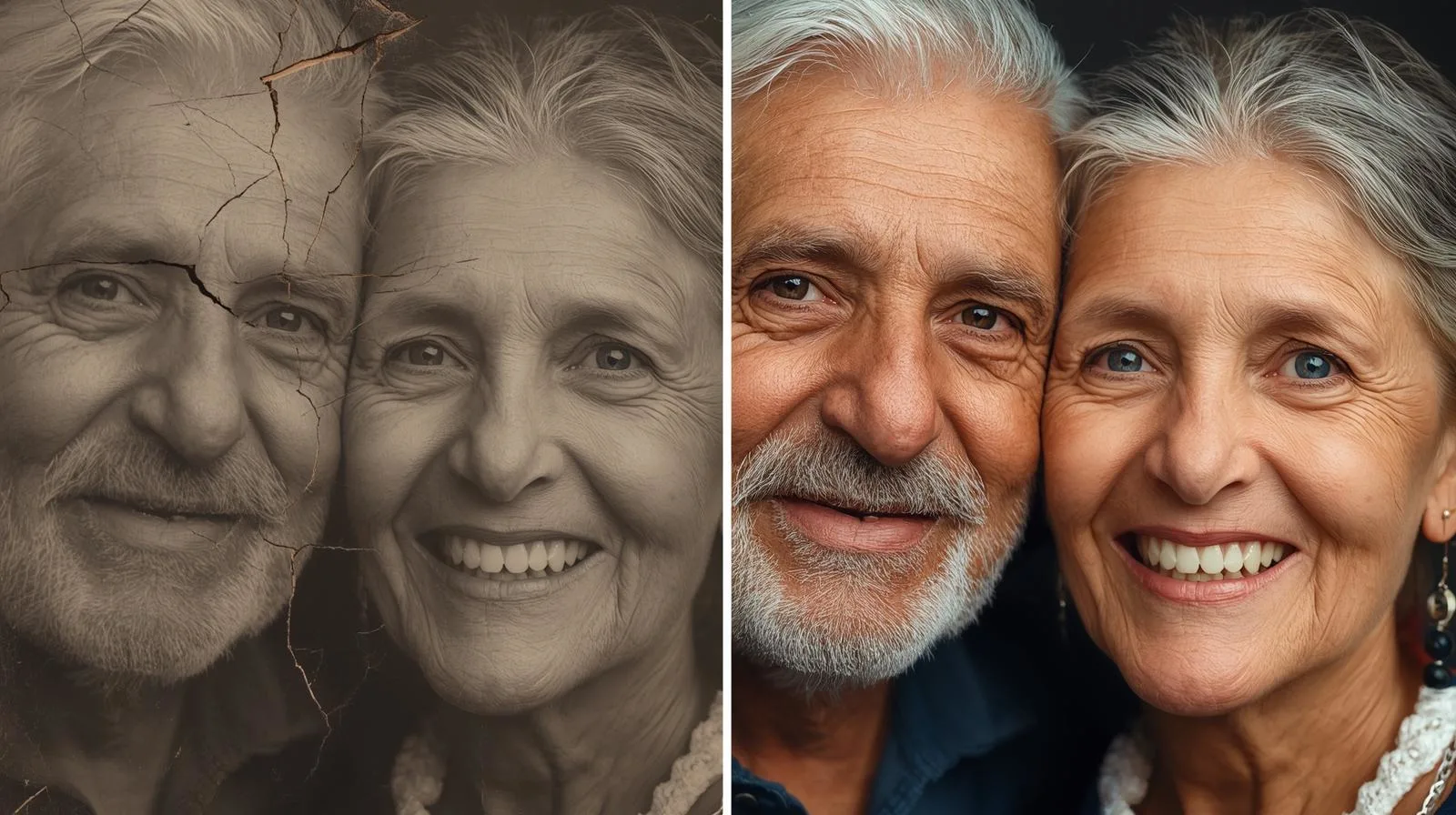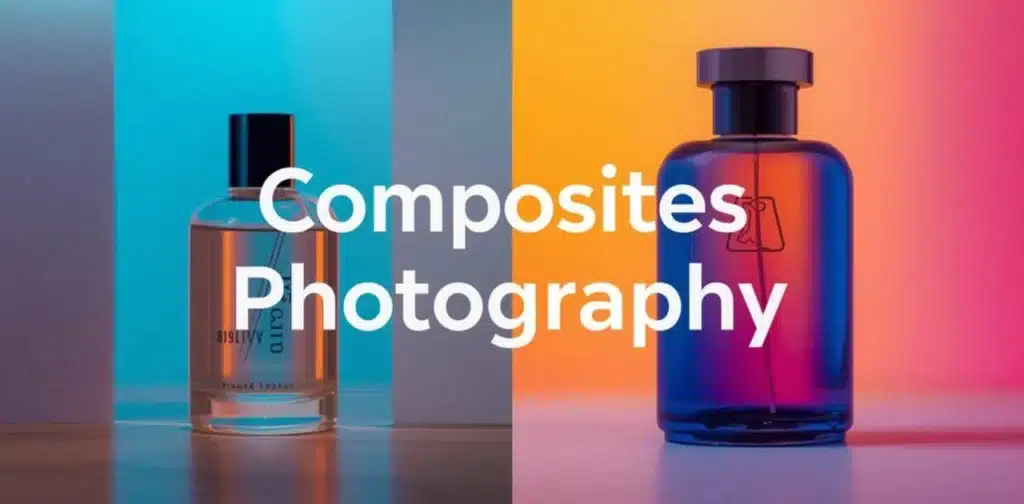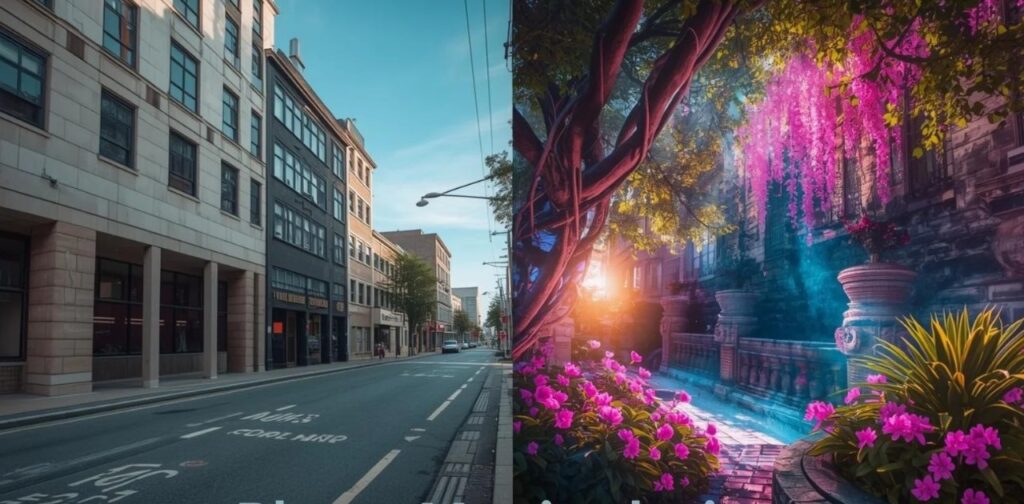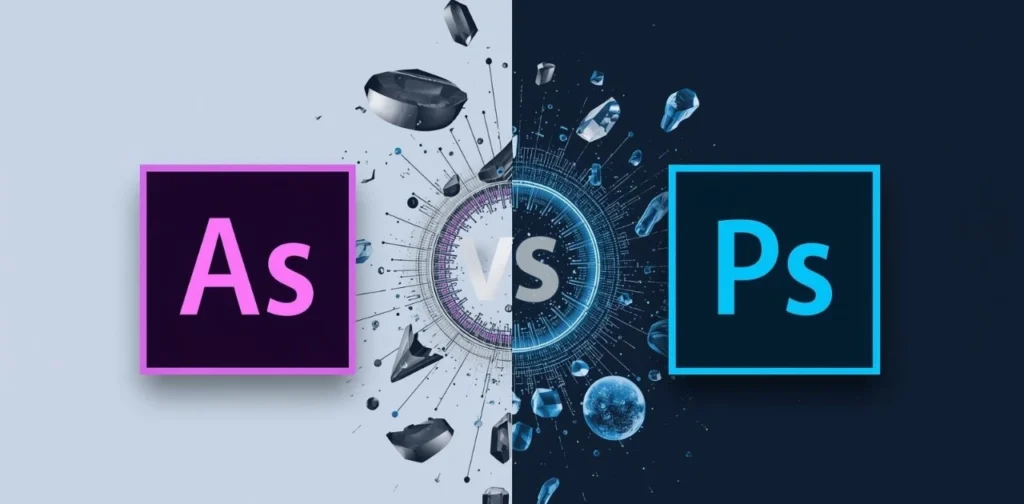Photo manipulation is the process of digitally altering an image to enhance, correct, or transform its appearance using software tools like Adobe Photoshop or Affinity Photo.
It can be as simple as brightening a dull photo or as complex as turning an ordinary street into a magical fantasy scene. The goal is to make an image look more appealing, balanced, or emotionally powerful without losing its natural charm.
Think of it like makeup for photos, just enough to highlight the best features without making it fake. In this blog, we will discuss this more details. Let’s start
The Core Concept —What Happens During Photo Manipulation
Every photo tells a story, but not every story looks perfect straight out of the camera. That’s where photo manipulation steps in, the art of turning an ordinary image into something that catches the eye and touches emotion. Let’s break down what really happens during this creative process.
Image Enhancement vs. Photo Manipulation: What’s the Difference?
Many people mix up photo enhancement and photo manipulation, but they’re not the same thing.
Image Enhancement focuses on improving what already exists —
- Fixing lighting and contrast
- Adjusting colors
- Removing dust or small marks
- Sharpening details for clarity
Photo Manipulation, on the other hand, changes the story of the image.
- Adding or removing people or objects
- Merging multiple photos together
- Changing the mood or environment completely
Think of enhancement as polishing a diamond, while manipulation reshapes it into a brand-new design.
At Sr Clipping, we once worked on a wedding photo where the lighting was dull and the background was cluttered. A few enhancements made it brighter, but full manipulation — replacing the messy background with a sunset view, turned it into a memory worth framing.
Have you ever edited a picture and felt amazed at how small changes made it look completely different? That’s the subtle magic behind this process.
How Digital Tools Change the Image’s Reality
Modern tools like Adobe Photoshop, Lightroom, and AI-based editors have changed how we see images forever. They don’t just edit, they reshape reality.
Here’s what these tools can do today:
- AI Selection Tools detect people, objects, or hair in seconds.
- Generative Fill and Object Removal make impossible edits look natural.
- 3D Lighting and Color Grading transform mood instantly.
Mobile Apps now offer features that once required professionals.
Back in the early 2000s, retouching a portrait could take hours. Now, AI can achieve similar results in minutes, though skill and human touch still make the difference between “good” and “wow.”
The Psychology of Visual Perception and Impact
Our brain loves visuals more than words. According to research, people remember 80% of what they see but only 20% of what they read. That’s why an edited photo can change how we feel about a product, person, or place.
Here’s the emotional side of it:
- Warm tones make us feel comfort and happiness.
- Cool tones suggest calmness or distance.
- Balanced lighting builds trust, that’s why brands prefer clean, bright imagery.
Think about advertisements, have you ever felt hungry just by seeing a juicy burger photo? That’s no accident. The color, lighting, and detail are carefully edited to trigger emotion.
Common Types of Photo Manipulation
All photo editor knows, not all images need the same kind of fix. Some need gentle retouching, while others demand creative transformations. Let’s explore the most common types of photo manipulation and how each one adds a different touch of magic.
Retouching and Skin Smoothing
Everyone wants to look their best in photos. Retouching helps clean up small flaws without losing natural beauty. It includes removing acne, dark circles, or wrinkles while keeping the skin texture real.
Common tools used:
- Healing Brush and Clone Stamp in Photoshop
- Frequency Separation for realistic skin tones
- Dodge and Burn for perfect light balance
I once edited a model’s portrait for a magazine cover. The goal wasn’t to make her look unreal, just to enhance her natural glow. The result felt authentic, not artificial.
Would you agree that natural beauty always looks better than plastic perfection?
Background Removal and Replacement
A clean background can completely change how a photo feels. Whether it’s a product on a white surface or a model placed in a dreamy landscape, the background sets the mood.
Here’s what this process usually involves:
- Selecting the subject with tools like AI Mask or Pen Tool.
- Cleaning edges so hair and fine details look sharp.
- Adding a new backdrop that matches lighting and perspective.
Many e-commerce stores depend on this. A single background change can make an item look 30% more professional and boost customer trust instantly.
Object Addition or Deletion
Sometimes, the photo would look perfect if only one thing wasn’t there, a trash bin, a photobomber, or a shadow. Object removal helps fix that.
On the creative side, adding elements brings imagination to life, birds flying across the sky, soft fog in a forest, or stars in a night scene.
A travel client once asked me to remove an entire crowd from a beach photo. It took patience and careful cloning, but the final image looked peaceful and untouched.
Small changes like that can completely change the emotion of an image.
Colors decide the mood. A cool blue tone can feel calm, while warm golden shades bring comfort. Color grading gives emotion to a photo through light and contrast.
Essential color tools include:
- Curves and Levels to fix brightness
- Hue/Saturation to balance tones
- Selective Color for fine artistic control
Even a slight shift in color temperature can make a photo feel new. A jewelry photo, for example, looks richer with balanced gold tones — something I’ve seen countless clients smile about.
Composite Imagery and Artistic Manipulation
This is where creativity goes wild. Composite imagery means combining several photos to create a scene that doesn’t exist in real life.
Think of:
- A flying city above clouds
- A product glowing in outer space
- A fantasy portrait surrounded by fire or petals
These edits require skill in lighting, perspective, and storytelling. The goal isn’t just to trick the eye, it’s to spark emotion and wonder.
Restoring Old or Damaged Photos
Old photos hold memories too precious to lose. Restoration brings them back to life by fixing cracks, faded colors, or torn edges.
Modern software can repair even century-old photos. Tools like Content-Aware Fill and AI Restoration Models make this possible in hours instead of weeks.
Photo manipulation isn’t just about pixels, it’s about preserving feelings, fixing flaws, and adding a touch of imagination. Each technique tells its own story, turning ordinary photos into moments that people never forget.
Popular Tools and Software for Photo Manipulation
You don’t need to be a tech genius to edit photos anymore. Today’s tools make photo manipulation simple, fun, and creative. Let’s explore some of the best ones that people use every day, from pros to beginners.
Adobe Photoshop —The Industry Standard
Adobe Photoshop is like the superhero of photo editing. It’s powerful, flexible, and trusted by millions. You can fix colors, smooth skin, replace backgrounds, or even build fantasy worlds — all in one place.
What makes it special:
- Layers: Edit parts of a photo without touching the rest.
- Smart Tools: Fix mistakes fast.
- AI Features: Save time with one-click edits.
GIMP and Other Free Alternatives
Not everyone wants to pay for editing software, and that’s okay. GIMP (GNU Image Manipulation Program) is a great free option. It does most of what Photoshop does, just with a simpler layout.
Other free choices include:
- Photopea: Works online, no installation needed.
- Pixlr: Perfect for quick edits on the go.
- Krita: Great for artists and illustrators.
If you’re just starting out, these tools are perfect. They help you learn photo editing without spending a single dollar.
AI-Powered Tools and Generative Editing (2025 Update)
AI is changing photo manipulation faster than ever. Now you can type what you want — and the tool creates it for you. It’s almost like magic!
Here are a few new favorites in 2025:
- Adobe Firefly: Creates objects or fills gaps with simple text prompts.
- Luminar Neo: Uses AI to fix lighting and enhance portraits in seconds.
- Remove.bg and Cleanup.pictures: Instantly remove unwanted items.
These tools save hours of manual work and make editing easier for everyone. Have you tried one yet? The results can surprise you!
Plugins and Extensions for Advanced Users
Plugins are like small helpers that make editing faster. They add extra features to your main software.
Popular plugins include:
- Nik Collection: Adds pro-level filters.
- Portraiture: Gives smooth, natural skin tones.
- Topaz Labs: Sharpens and reduces noise with AI.
Even a simple plugin can boost your workflow and cut your editing time in half. Once you try a few, you’ll wonder how you ever worked without them.
Photo editing tools keep getting smarter every year. Whether you use Photoshop, GIMP, or AI apps, the goal stays the same, to make photos look amazing and tell better stories. Which one fits your style best?
The Creative Process —How Photo Manipulation Works
Photo manipulation may look complex, but it’s actually a series of small, simple steps. Each step adds beauty, balance, and emotion to a picture. Let’s walk through how the process works in an easy, beginner-friendly way.
Step-by-Step Breakdown
1. Importing and Preparing Images
Every great edit starts with the right image. Open your photo in software like Photoshop or GIMP. Check the size, color mode, and quality. Clean up dust or spots so the base image looks neat before editing.
2. Selecting and Masking Subjects
This part separates the main subject from the background. Tools like Quick Selection, Pen Tool, or AI Auto-Select make it easy. A clean selection keeps edges natural — especially around hair and clothing.
Try zooming in close. Even a one-pixel mistake can change the result.
3. Layering and Blending Techniques
Layers are like transparent sheets stacked together. You can edit one part without touching the rest. Blending modes help mix colors and light smoothly.
Common blending modes:
- Soft Light: Adds gentle contrast.
- Multiply: Darkens shadows naturally.
- Screen: Brightens highlights.
It’s a bit like painting with light, each layer adds mood and depth.
4. Applying Filters and Adjustments
Filters give personality to a photo. Adjust brightness, contrast, and color balance to match the desired tone.
Use simple corrections first:
- Curves or Levels for brightness control
- Hue/Saturation to fix dull colors
- Sharpening for clear details
Small changes make a big difference. I still remember editing a dull jewelry photo, after a few gentle tweaks, it suddenly looked like it belonged in a magazine.
5. Exporting for Print or Digital Use
After finishing the edit, choose how you’ll share it.
- For print, save as TIFF or high-quality JPEG.
- For web, export smaller, faster-loading files.
Always double-check color profiles so the photo looks good everywhere.
Key Principles: Lighting, Shadows, and Realism
Lighting decides emotion. Shadows add depth. Together, they make photos feel alive.
- Match the light direction, a shadow going left while the sun shines right looks fake.
- Use soft edges for shadows to make them natural.
- Balance brightness so no area feels too dark or too flat.
Think of it like storytelling through light. A photo with proper lighting feels honest and warm.
Photo manipulation isn’t just about tools; it’s about patience and observation. Each step, from import to export, helps bring imagination to life. Once you understand the flow, even simple edits can turn ordinary photos into something that truly connects with people.
Ethical Considerations and Controversies
Photo manipulation can turn dull images into works of art. Yet sometimes, the same skill can blur the line between truth and illusion. Knowing where that line lies helps editors stay creative and honest.
When Does Photo Manipulation Become Misleading?
Editing becomes misleading when it hides the truth or changes facts.
For example:
- Making a crowd look larger in a news photo
- Smoothing a model’s face until it looks unreal
- Editing a product to seem better than it really is
These changes might look harmless but can trick people. Studies show that 65% of viewers believe edited photos are real, even when the difference is obvious.
A good editor enhances beauty, not reality. I once worked on a clothing ad where the client asked to make a model’s waist smaller. Instead, I adjusted posture and lighting to flatter the look naturally. It kept the ad honest and still attractive.
Real-World Applications of Photo Manipulation
Photo manipulation isn’t only for artists or photographers. It quietly shapes almost everything we see, from billboards and websites to movies and social media. Let’s look at how it works in different industries around us.
In Advertising and E-Commerce
Every product photo you see online has likely been edited. Businesses use photo manipulation to make items look clean, clear, and desirable.
Key uses include:
- Background cleaning to make products pop.
- Color correction for accurate shades.
- Reflection and shadow creation to make photos look 3D.
I once worked with an online jewelry store where simple lighting and reflection edits boosted their sales photos instantly. They told me, “Now our images sell before we even speak.”
Good visuals build trust. A bright, detailed image helps buyers feel confident, especially when shopping online.
In Fashion and Beauty Industries
Fashion magazines and beauty brands depend heavily on photo editing. It helps models look polished while keeping the mood creative and emotional.
Common edits include:
- Skin retouching for smooth texture
- Color grading to fit brand tones
- Background styling to create the right mood
Still, top brands now prefer natural edits. People relate better to real skin, wrinkles, and shadows. It’s not about perfection anymore, it’s about authenticity.
Think about your favorite fashion ad, do you notice the soft lighting, clean edges, and balanced tones? That’s skilled photo manipulation making beauty look believable.
In Art and Conceptual Photography
Artists use photo manipulation as a way to express imagination. It lets them blend dreams, ideas, and emotions into a single frame.
For example:
- Turning a plain sky into a cosmic galaxy
- Combining city lights with a forest scene
- Creating surreal portraits that tell stories
Conceptual photographers often say, “Reality is my canvas, imagination is my brush.” Editing gives them freedom to paint new worlds without limits.
Each artistic edit invites viewers to feel something, wonder, peace, or curiosity. That’s the power of visual storytelling.
In Film, Media, and Social Content Creation
From blockbuster movies to TikTok clips, photo manipulation plays a key role. Film editors use it to design posters, fix colors, and enhance visual scenes. Social creators use it to stand out in crowded feeds.
Common uses:
- Poster and thumbnail design for strong first impressions
- Color correction to match cinematic tones
- Visual effects (VFX) that blend real footage with fantasy
Even simple apps now let users adjust light, tone, and background in seconds. That’s why every scroll on social media feels like entering a digital art gallery.
Photo manipulation connects art, business, and emotion. Whether selling a product or sharing a story, it gives visuals the power to speak, louder, clearer, and more beautifully than words ever could.
Conclusion
Photo manipulation mixes art and honesty. It helps people show ideas in a clear, emotional way. Editing a photo should not hide the truth, it should make the story easier to see. A small change in light or color can make a photo feel warm and alive. Good editing keeps the photo real while making it beautiful. Every picture has a story, and editing helps that story shine.
In today’s world, we see photos everywhere, on phones, ads, and screens. Learning how editing works helps us see what is real and what is not. It builds trust between creators and viewers. Smart editing is not about faking things; it’s about showing truth with care. Real beauty comes when creativity and honesty work together.

